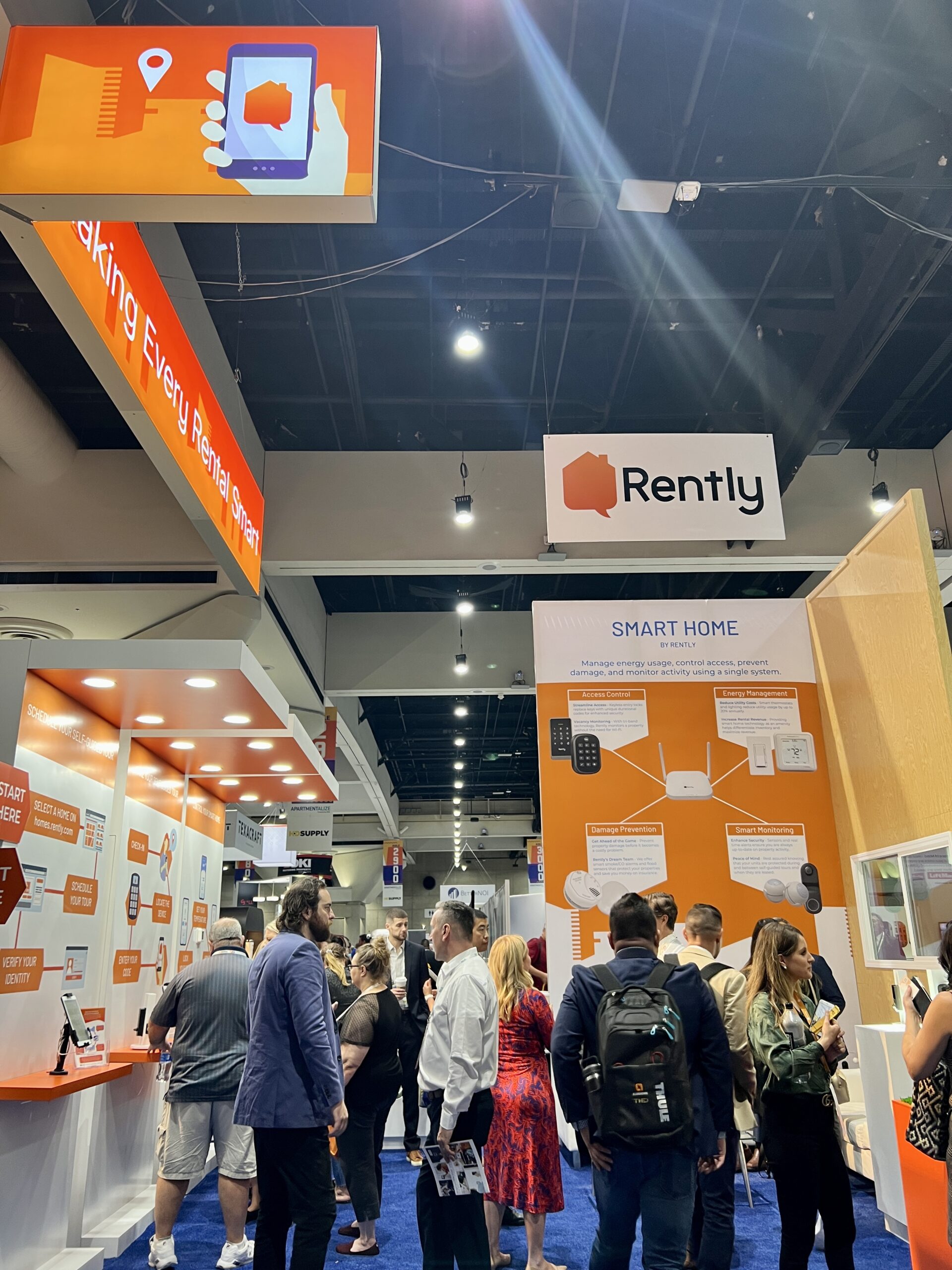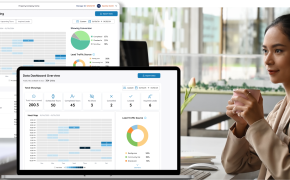The multifamily housing industry came together this June to attend “Apartmentalize 2022,” the annual conference hosted by the National Apartment Association (NAA). Below, we’ve gathered our 6 takeaways from Apartmentalize 2022.
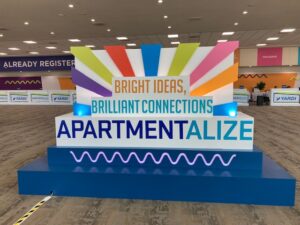
Operators, managers, vendors, and proptech providers participated in educational sessions, colorful exhibits, and networking events.
Turnout was in the thousands, and everyone was excited to move on from the pandemic constraints of previous years.

General Impressions
Despite the renewed sense of normalcy, the conference was also buzzing with a sense of uncertainty caused by market changes.
Furthermore, technology is transforming property management, demographic shifts are impacting consumer behaviors, and inflation is looming over operator business decisions.
NAA’s “Apartmentalize 2022” Conference offered industry insights, expert opinions, and technology solutions to all who are working hard to address these new challenges.
Cindy Clare, Chief Operation Officer, Bell Partners, previous NAA Chairman, and newly inducted member of the NAA Hall of Fame, noted that “challenges are the same whether you have 5,000 units or 50,000 units” and she encouraged attendees to “meet the customer where they want to be met.”
Similarly, Keynote Speaker Earvin “Magic” Johnson, also encouraged the industry to take a customer-centric approach to overcoming the current economic headwinds. He shared how focusing on customer preferences helped his urban real estate investments succeed. Simply by adjusting the menu of his Starbucks franchises to appeal to local customer preferences, Johnson outpaced the sales of all other franchises nationwide.
Both of these respected real estate industry leaders focused on “the people factor” to succeed, a theme that was echoed throughout the 3-day event.
Overall, conference participants also heard many times that achieving success in today’s multifamily housing market depends on balancing technology innovation with the human element.
Takeaway 1: Know Your Customer
In order to be customer-centric, we must dispel myths about renters.
A session entitled “Breaking Myths about Renter Households and Secret Demand Drivers” presented a new image of today’s renter.
Currently, the average renter is highly educated, earns a high annual income ($79,000) and is predominantly single (only 42% of renter households are married). The average household age is 33, and only 21% of renter households include children. Millennials are still the prime drivers of apartment demand.
Consequently, multifamily operators must now cater to a new type of customer. Tech-savvy renters look for properties with smart home amenities. Similarly, women, who comprise a high percentage of renter households, generally want to feel safe. Therefore, they tend to look for properties with enhanced smart home security.
The new generation of renters are also very comfortable in the “sharing economy.” As a result, they look for properties with community spaces and shared amenities, such as gear-sharing lockers and rentable micro-offices. These amenities usually require some kind of common area smart access solution.
As a result of these demographic changes, multifamily operators and managers increasingly must adapt their property offerings. Consequently, investment in proptech has become a necessity. Thankfully though, these new expenses can be offset by the ability of single, educated renters to pay higher rates.
Takeaway 2: Know Your Market
In order to be customer-centric, we must understand market conditions.
A session entitled, “Focus on the Road Ahead: The Economy and Multifamily Housing Sector” presented an overview of economic headwinds.
Currently, home prices are surging upwards of 20%, rental rates are surging upwards of 9% increases, and mortgage rates are up 60% in average payments.
The demand for housing has never been higher and there is pent-up demand in the millions to rent/buy when properties become affordable again. Until then, RealPage reported that renewal rates are higher than ever, with many renters paying up to 10% more just to spare themselves the expense of moving.
While the high demand for housing and ability to upcharge rental rates currently benefits operators, inflation is forcing them to focus on reducing operational expenses. They must invest in proptech that saves them money and streamlines their operations.
Takeaway 3: Know Your Technology
Smart amenities are now standard.
As evidenced by the many conference exhibits, “proptech” is a must have.
The moderator of a panel entitled “Shifting Dynamics in Resident Expectations, Connectivity and Technology”, observed that “property management companies are becoming technology companies.”
In response, operators are creating “innovation teams” or hiring dedicated technology experts to focus on the resident experience.
Proptech innovation teams consider many questions before investing: Is it better to buy an existing solution or build your own? Will the technology be relevant 2 years from now? Does the solution integrate with existing systems or those of future property buyers? What is the operational impact? Is it secure? What is the best pace of deployment and will it work when deployed? All of these considerations are critical and require extensive vetting of providers.
Most importantly, perhaps, operators must decide how they will measure proptech success. Implementing technology alone is not enough. Ultimately, the success of proptech depends on people. The technology must have a positive impact for onsite teams, both leasing staff and maintenance teams.
Takeaway 4: Involve Onsite Leasing Staff
Tech is here to stay, but people still matter.
Most conference panelists agreed that proptech deployments are pointless unless onsite staff is comfortable and trained with its use.
During a panel entitled, “Proptech: Empowering and Evolving Teams”, Cindy Clare, COO of Bell Partners, noted that managers were always told that technology could eliminate staff, but most found that not to be the case.
Although proptech can alleviate current staffing shortages, the tech itself will never fully replace the human element of property management.
Instead, Clare observed that proptech redeploys staff, eliminates the “taskiness” of property management, and allows for remote work, even eliminating some weekend work. She emphasized the importance of “balancing centralization with the human element.”
For proptech to achieve operational goals, staff must be brought into the process early, trained well and shown how the technology benefits their work.
It is very important to “help staff understand that proptech will help them.” Clare encouraged managers to empower their teams by showing them how proptech can help them do more with less.
Takeaway 5: Secure the Buy-In of Maintenance Staff
Proptech requires onsite technical support.
A big trend at the “Apartmentalize 2022” conference was the game-changing impact of maintenance apps.
Gone are the days when maintenance staff had to carry around heavy key rings. New maintenance apps allow for digital codes and fobs to become “master keys” to properties. Smart apps and keyless entry are streamlining operations for maintenance teams who embrace the technology.
During the conference, when operators were asked about what influences their proptech decision, their responses often centered on ease of installation and the capability of a proptech provider to train onsite maintenance staff.
Multifamily operators are choosing proptech providers who can help shorten the learning curve of their onsite maintenance staff by offering easy-to-understand videos and other training tools, such as AI avatars that interact with maintenance personnel.
There was strong agreement that operators must win over their maintenance staff and that the best proptech providers are those who offer world class customer support.
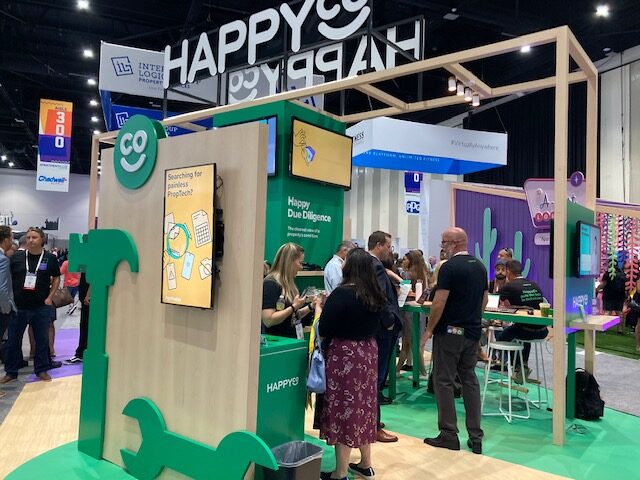
Takeaway 6: Leverage the Power of Leasing Data
While proptech and maintenance apps are critical to streamlining operations, their real value is the data they provide to operators.
Data is what allows operators to know what is happening at their property, especially in the wake of centralized leasing models. Data is what allows operators to make operational adjustments to achieve goals.
One of the most attended panels at this year’s NAA conference was entitled, “Organizing and Leveraging Leasing Data To Create Actionable Reporting”, moderated by Rently’s Chief Operating Officer, Andre Sanchez.
When presenting the topic, Sanchez offered 3 key stats: only 26.5% of companies are data confident; 80% of data is unstructured; and more than 90% of companies believe that their data is not fully utilized because their people do not embrace it.
These stats show that data – just like proptech – is ultimately “people-centric.” Therefore, the full benefits of data collection and reporting can only be realized when teams understand the benefits of reporting.
Proptech’s Role in Data Governance
Sanchez noted that proptech stacks are becoming more sophisticated, with operators often using between 5-10 different platforms. At the same time, leasing staff at all levels require “self-serve” access to property data.
The solution to this complexity is a combination of clear “data governance” and ongoing, multi-faceted staff training.
Data governance involves operators setting up internal frameworks that clearly define terms, control inputs, standardize processes, and separate data into unique access points.
Panelists agreed that setting KPIs and establishing governance is foundational. However, getting the buy-in of staff at all levels and from all operational areas is mission-critical.
Data is only valuable if it is correctly inputted, shared, and understood.Only then does data become truly “actionable.”
Data – like proptech – is activated to its full potential by “the people factor.” Panelists agreed that training and incentivizing staff to appreciate the value of data reporting is what transforms leasing companies and drives property innovations.
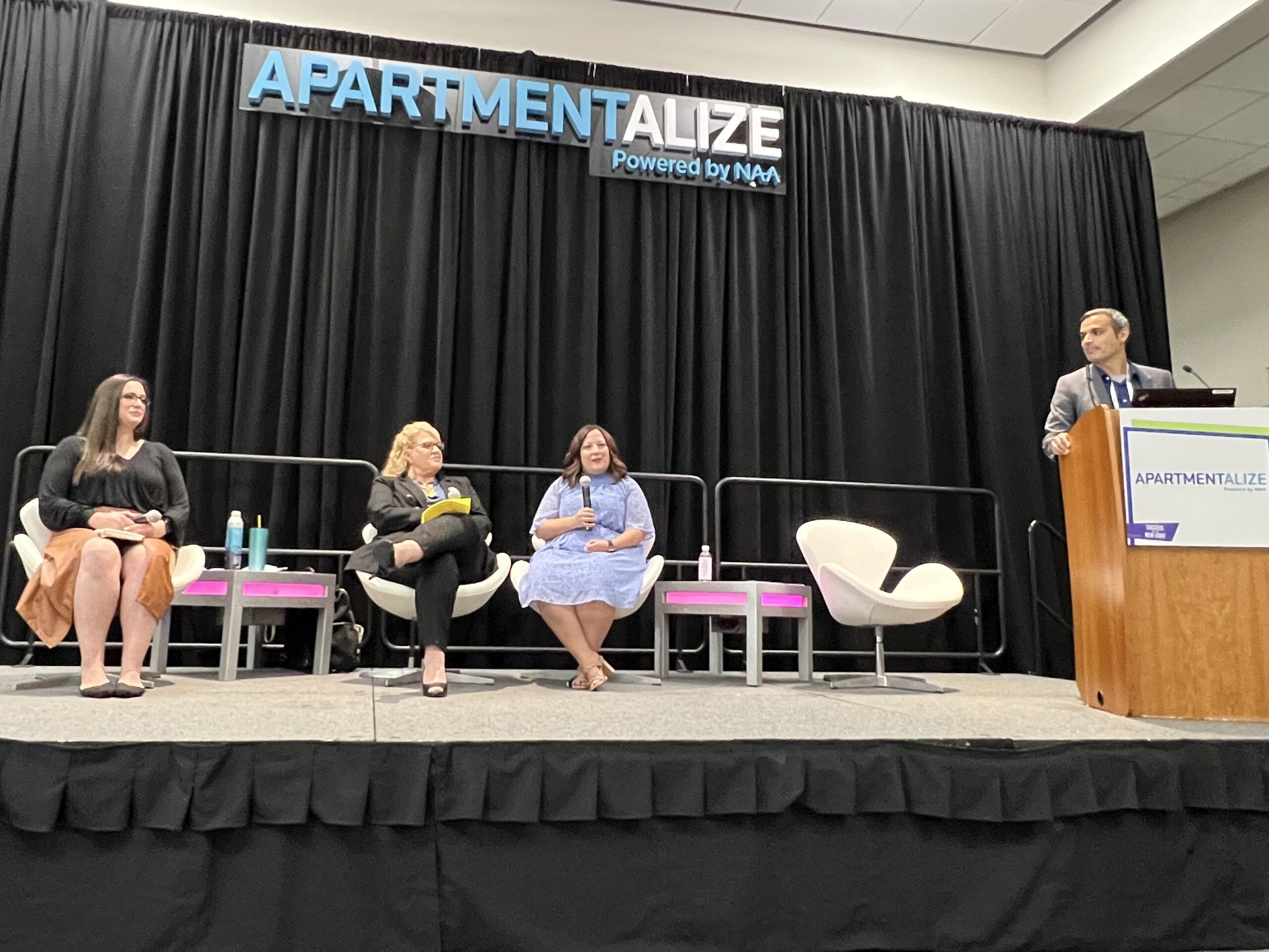
The Future: Creating Smart Communities
The future of multifamily housing will rely on a hybrid model that balances people and proptech.
Whether it’s for the renter, the manager, the leasing staff, or the maintenance teams, one thing is clear. Neither real estate professionals or proptech can succeed without the other.
Empowering people to choose and use technology is necessary to create truly smart communities. When all embrace proptech, “magic” happens and all-star teams are created.

